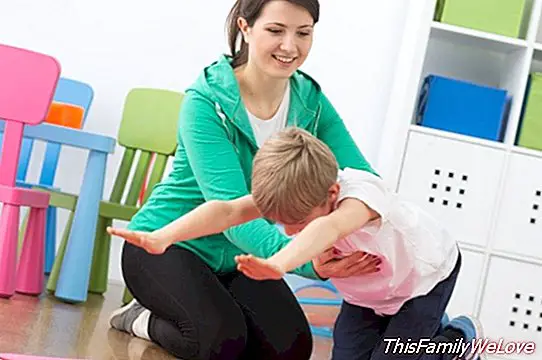Pediatric physiotherapy, a support for the motor development of the child

Go to physiotherapist It is something that is usually related to the elderly in the house or only for those who, after an injury, require these attentions. But you never think that the smallest of the house may need a visit to this specialist. Many parents think that their motor apparatus has not yet developed to present these ailments.
But the pediatric physiotherapy It is highly recommended, especially for those children who have problems at a very early age to ensure a good future. In addition, take the child to this specialist and not wait for these problems to disappear by themselves and intervene through the care of this doctor.
What does a pediatric physiotherapist do
What is a pediatric physiotherapist in charge of? The specialist Jone Abad defines these professionals as a branch within the Physiotherapy dedicated to the child and that seeks to solve possible problems to obtain the highest functional level in those cases where there are motor or sensory deficiencies. The goal is to achieve a personalized treatment for each case.
Abbot summarizes the objectives of pediatric physiotherapy on these points:
- Help the child reach its maximum potential for independence.
- Encourage the participation of the child in activities of daily life either at home, at school or in their group of friends.
- Provide support to the family to give a solution to problems that a priori did not seem to have.
In what cases is it relevant?
In what situations should parents take their children to the pediatric physiotherapist? These are some cases in which Abad advise:
- Preventive cases:
a) Those who have suffered or suffer from chronic diseases, hospitalizations, social risk, without any other added problem.
b) Those that present transient anomalies, in order to avoid postural alterations or bad habits when moving.
c) Those with high biological risk, without neurological affectation (frequently premature).
- Children with brain-motor alterations, such as cerebral palsy.
- Children with other neurological pathologies other than cerebral palsy: cranioencephalic trauma, spina bifida, etc.
- Children with neuromuscular diseases: spinal muscular atrophy, Duchenne muscular dystrophy, etc.
- Children with syndromes with motor pathology: Down, Rett, Wolf, Angelman.
- Children suffering from musculoskeletal pathology: achondroplasia, Perthes disease, arthrogryposis, congenital hip dislocation, scoliosis, congenital torticollis, alterations in the shape of the skull of positional origin (plagiocephaly), etc.
- Children suffering from pathologies of the respiratory system: bronchiolitis, asthma.
Damián Montero




